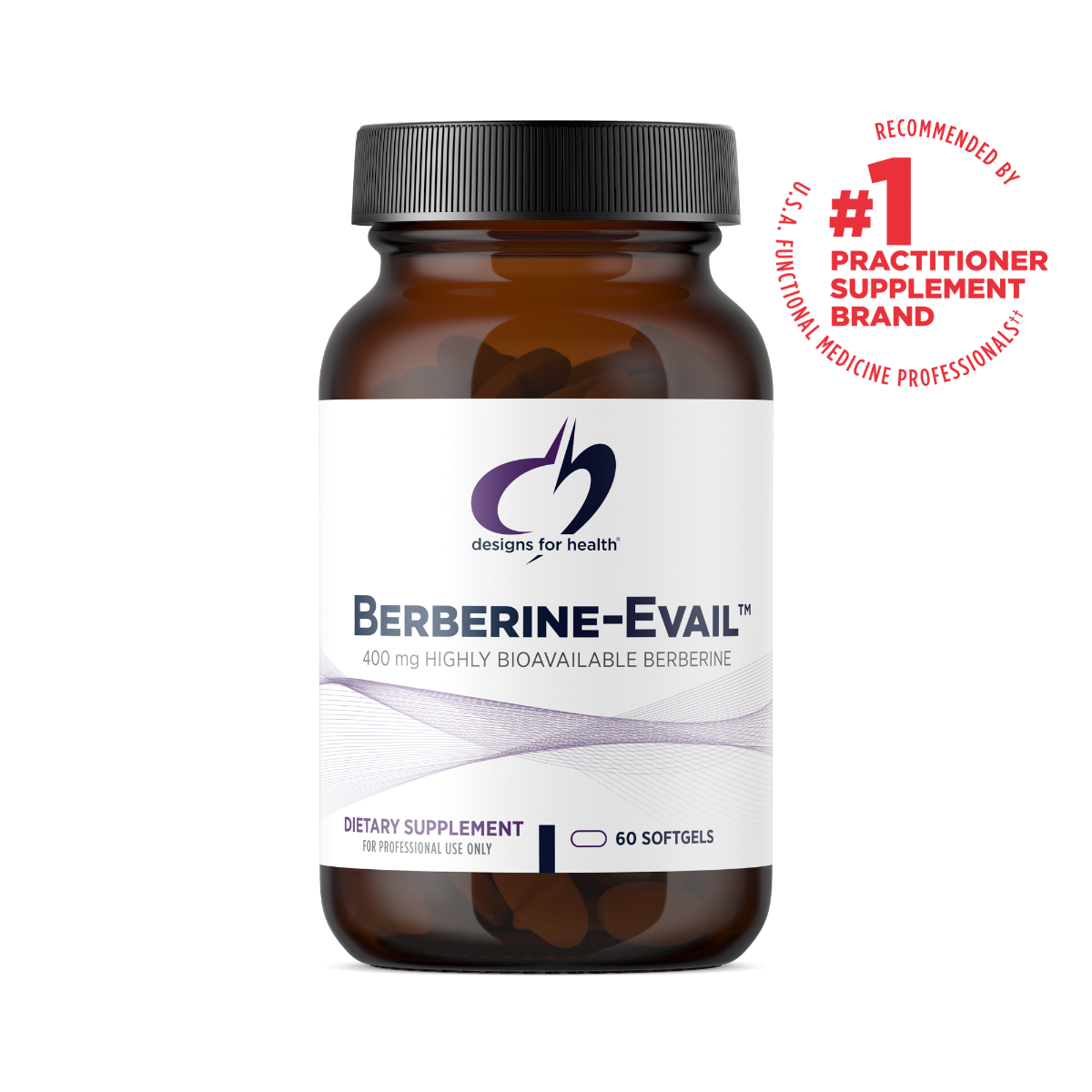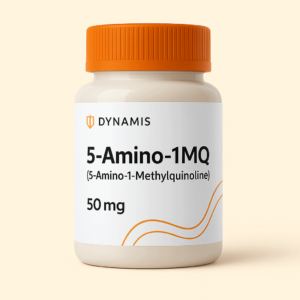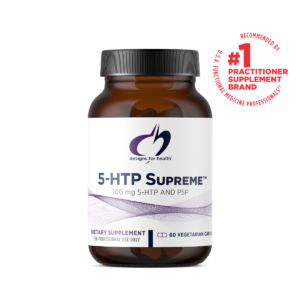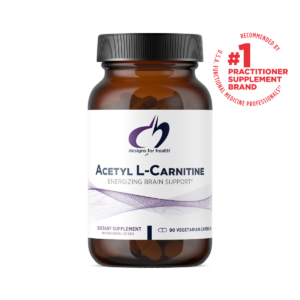Berberine-Evail™
Overview
Berb-Evail® is now Berberine-Evail™
Berberine-Evail™ contains 400 mg of the plant alkaloid berberine (from Berberis aristata) per softgel for the primary purpose of supporting healthy blood sugar metabolism, normal insulin function, and weight management.* Berberine has also been used to support gut microbial balance and gastrointestinal health.*
Designs for Health’s proprietary Evail™ emulsification technology utilizes quillaja extract, delta- and gamma-tocotrienols, sunflower lecithin, and medium-chain triglycerides (MCTs) for enhanced nutrient absorption and bioavailability, without the use of potentially harmful surfactants.
Recommended Use: Take 1 softgel twice daily with a meal, or as directed by your health‑care practitioner.
* These statements have not been evaluated by the Food and Drug Administration. This product is not intended to diagnose, treat, cure, or prevent any disease.
Technical Data:
Formula Highlights • Ideal balance of fat‑soluble vitamins in one convenient softgel; each softgel delivers targeted amounts of A, D, and K – substantially higher than the Dietary Reference Intakes (DRI) determined by the Institute of Medicine’s Food and Nutrition Board – for optimal health* • Optimized bioavailability using Evail™ technology with quillaja extract, MCTs, and DeltaGold® • Formulated with vitamin D3 for superior bioavailablity • Vitamin D promotes calcium absorption in the intestinal tract and helps modulate innate and adaptive immune system responses2,4,16 • Preformed vitamin A (retinyl palmitate) supports epithelial cells of the skin, respiratory, gastrointestinal, and urinogenital tracts — the body’s front line of immune defense14,15 • Multipronged vitamin K support — supplied directly as vitamins K1 (phytonadione) and K2 (menaquinone‑4 [MK‑4]), in addition to MK‑4 derived from the conversion of K1 with aid from geranylgeraniol (GG)17 • Vitamins K1 and K2 (as MK‑4) help activate osteocalcin, which binds calcium and helps direct it into bones, as well as MGP (matrix‑GLA protein) which averts calcium deposition away from arteries, and other tissues such as lung or joint tissue3,17‑19 • DeltaGold® naturally derived delta‑ and gamma‑tocotrienols (vitamin E isomers) have superior antioxidant potential6 Benefits* • Supports fat‑soluble vitamin status • Supports cardiovascular health and arterial strength and elasticity1 • Supports immune function2 • Promotes optimal calcium absorption and utilization3,4 • Promotes bones and teeth health3,5 • Promotes antioxidant status6 • Facilitates fat‑soluble vitamin absorption7‑9 • Supports normal metabolism and thyroid hormone regulation10 • Promotes healthy skin, hair, and nails4,11,12 • Helps maintain eye health and night vision13‑15 ZTEC ADK 1/24 Vitamin A ADK Evail™ provides 1,515 mcg retinol activity equivalents (RAEs) of vitamin A as retinol palmitate, which serves as a precursor to retinoic acid (RA), the most bioactive form of vitamin A in the body. Vitamin A is best known as a key nutrient in visual acuity and retinal health, especially night vision, and for its essential role in supporting healthy immune function.13,14 RA has been shown to play a critical role in generating mucosal dendritic cells from bone marrow, and it is believed to be involved in generating immunoglobulin A antibody‑secreting cells that are housed in the enterocyte mucosa.20‑22 Within the gut, vitamin A is central to immune homeostasis, coordinating both innate and adaptive immunity; RA stimulates dendritic, T‑cell, and B‑cell migration to the intestine, and directly regulates their proliferation and differentiation, which is crucial to the maintenance of the gut barrier.23 Furthermore, RA receptors activate, repress, and modulate gene expression involved in all aspects of development that influence various other physiological pathways, including fetal development.13 Vitamin A is also crucial for healthy thyroid function, red blood cell production, male and female reproductive health, and cellular maturation.13,24,25 Vitamin E Isomers This formulation of ADK Evail™ is notable for supplying vitamin E isomers as DeltaGold® tocotrienols (T3). These annatto derived compounds are extracted using a natural evaporative method. Growing evidence suggests delta‑ and gamma‑T3 are superior to alpha‑tocopherols for supporting antioxidant activity, bone health, cardiovascular health, and a balanced inflammatory response.6,26,27 Vitamin E is known for maintaining the integrity of cellular membranes and structural lipids. Human studies have shown that T3 supplementation may have beneficial effects on cardiovascular health (including the support of healthy blood lipid metabolism), immune modulation, neuroprotective and cognitive function, skin protection, and hepatoprotectivity in individuals with nonalcoholic fatty liver disease.27 Vitamin D Vitamin D is a fat‑soluble vitamin that is well‑known to support bone health through the regulation of calcium‑phosphorus homeostasis and its role in bone turnover. Not only is vitamin D essential for bone health, but it is necessary for healthy immune function, as it modulates innate and adaptive immune system response via vitamin D receptor (VDR) gene activation. VDR is a critical transcription factor in differentiating lymphocytes within the bone marrow into monocytes and granulocytes, and it also plays a vital role in regulating endothelial tight junction protein expression and microflora composition within the gut.28,29 Vitamin D plays a role in regulating Th1 and Th2 lymphocyte balance and downregulating inflammatory cytokine expression. A systematic review and meta‑analysis of randomized control trials published in 2019 showed that vitamin D supplementation, which included D3 and D2, was not statistically significant in lowering mortality. Yet, when D3 was studied as a subgroup, all‑cause mortality was significantly lower than in trials with D2.30 Vitamin D also plays a role in the brain, influencing brain development in early life and brain function in adults, and vitamin D deficiency can be associated with depressed moods and impaired cognition.31‑35 Vitamin K ADK Evail™ contains 2,000 mcg of vitamin K (1,000 mcg of vitamin K1, as phytonadione, and 1,000 mcg of vitamin K2, as MK‑4) per serving. Vitamin K is a fat‑soluble vitamin like vitamin D, and complements the support of bone and cardiovascular health, along with many other aspects of physiology.1,17 For example, vitamin D increases calcium absorption, whereas vitamin K improves calcium deposition in the bones while inhibiting its accumulation in the arterial walls. This explains the results from studies that have found the combined supplementation of vitamins D and K to be more effective than that of either vitamin alone.1,17 Vitamin K exists in two main forms: vitamin K1 (VK1), as phylloquinone, which is found in leafy green vegetables, and vitamins K2 (VK2s), also known as menaquinones, which are found in certain animal products, fermented foods, and are also produced by gut microbiota. VK2 occurs naturally with various lengths (n = 1 to 14) of their side chains, abbreviated here as VK2 (MK‑n). VK2 (MK‑4) represents 90% of the total vitamin K stored in the human body. Animal studies have shown that other forms of VK2s convert into VK2 (MK‑4) in all tissues, except the liver.17 Adequate Intake for Clotting versus Extra‑hepatic Roles For adults 19 years and older, the adequate intake (AI) for VK1 was set at 120 mcg for men and 90 mcg for women, but this level is only sufficient to fully activate blood‑clotting proteins.36 No AI has been set for VK2s and no upper level of toxicity has been established by the Institute of Medicine for VK1 or VK2s.36 However, extensive evidence has revealed a variety of extra‑hepatic roles for VK1 and VK2, which may require much higher intake levels of these vitamins.17 The most researched roles involve control of calcium transport between tissues. VK1 and VK2 are transported in part to the liver to support the production of coagulation factors and to extra‑hepatic tissues where they have various roles. These include: (a) carboxylation of gamma‑carboxyglutamate proteins (GLA) on osteocalcin (Oc), which is involved in calcium deposition in bone and teeth; (b) carboxylation of matrix gamma‑carboxyglutamate proteins (MGPs), which is involved in preventing calcium deposition in the vascular wall, heart valves, lungs, and kidneys.17,37 Oc and mgPs should be maximally carboxylated for optimal activity, as assessed in many studies investigating the effects of VK1 or VK2s supplementation on improving bone density and arterial elasticity or reducing progression of calcium scores in coronary arteries.17 Vitamin K1 and Geranylgeraniol Metabolic Pathways VK1 is partially deposited in tissues as phylloquinone and is partially converted to VK2 (MK‑4) by conversion to VK3 and the addition of geranylgeraniol (GG) (see Figure 1) from GG pyrophosphate (GGPP). GGPP is a metabolic intermediate in the mevalonate pathway and may also be supplemented from plant extracts: annatto, flaxseed, sunflower oil, olive oil, tomatoes, and select medicinal herbs.38,39 Thus, GG is a precursor to endogenously synthesized VK2 (MK‑4) from VK3. VK3 is derived from ingested VK1 or any VK2s ingested as such or derived from gut fermentation of VK1. GG and GGPP are synthesized endogenously in humans, but this may not always be adequate to support the body’s needs, especially during aging. GGPP plays a pivotal role in protein synthesis, CoQ10 production, and VK2 (MK‑4) conversion from VK3, further emphasizing its biological importance.39 Medications with inhibitory actions on the mevalonate pathway (such as statins or bisphosphonates) were found to inhibit GG synthesis in various tissues, such as kidney, vascular smooth muscle, and white blood cells.39 GG deficiency likely impairs VK1 to VK2 (MK‑4) conversion, which results in less VK2 (MK‑4) tissue deposition. Supplementation with GG may mitigate some of these detrimental effects.39 The 5 mg serving of GG in these formulas supports the partial conversion of VK1 to VK2 (MK‑4) before tissue deposition. This may especially benefit older individuals or those taking statins or bisphosphonates.39 Vitamin K2 (MK‑4) Metabolic Pathways Ninety percent of the vitamin K that is stored in the body is represented by VK2 (MK‑4), with the rest mostly being VK1. However, each extrahepatic tissue seems to store a preferential ratio of VK1/VK2 (MK‑4), such as: 90% VK1 and 10% VK2 (MK‑4) in the heart, 25% VK1 and 75% VK2 (MK‑4) in the arteries, and 23% VK1 and 77% VK2 (MK‑4) in the bone.17 See Figure 1 for examples of tissue ratios for VK1/VK2 (MK‑4). VK2 (MK‑4) has unique genetic and metabolic effects in human physiology, which are believed to be due to its GG component.39 In addition to its role in carboxylation, VK2 (MK‑4) exerts feedback inhibition through molecular mimicry with GGPP, a downstream metabolite on the mevalonate pathway. This may be why VK2 (MK‑4) has distinct effects compared with other VK2s or VK1. In vitro studies with VK2 (MK‑4) have shown that it can increase osteoblast production of osteocalcin and collagen type 2. Additionally, VK2 (MK‑4) has been shown to reduce osteoblast apoptosis, demonstrating its unique ability to support bone strength.17 In vitro addition of GG to osteoclasts has been shown to inhibit their formation in pathways similar and independent from those of VK2 (MK‑4). This was mediated by suppression of the receptor activator of nuclear factor kappa B (NF‑κB) ligand (RANKL) expression, and there was no competitive action among GG and VK2 (MK‑4) molecules.40 Rationale for 1 mg Serving of VK1 and 1 mg Serving of VK2 (MK‑4) The serving of 1 mg of VK1 in these formulas is substantiated by the results of the following interventions: A serving of 1 mg of VK1 lowered the percentage of uncarboxylated osteocalcin (ucOC) to <5% in three studies reported here.41‑43 A serving of 0.1 mg of VK1 achieved a 1.3% increase in bone density for menopausal women when supplemented along with vitamin D, calcium (Ca), and magnesium (Mg).43 A dose of 1 mg of VK1 preserved arterial elasticity when supplemented with additional Ca, Mg, zinc, and vitamin D.44 A serving of 0.5 mg of VK1 caused a 6% reduction in arterial calcium score progression in one study45 and an 80% reduction in dephosphorylated, uncarboxylated matrix Gla protein (dp‑ucMGP) in another study (from 485 to 97 pmol/L).45 Evolutionary intakes have been estimated at approximately 1 mg of VK1 per day, which further substantiates recommending this serving to meet foundational needs.46 The serving of 1 mg of VK2 (MK‑4) was set in these formulas based on the following considerations: • Provides a pre‑formed source of VK2 (MK‑4) for tissue deposition due to VK2 (MK‑4) being the preferred form, representing 90% of total VK stored in the body. • Provides an additional source of GG and is made available to various tissues that require it to partially convert VK1 to VK2 (MK‑4). VK2 (MK‑4) is cleaved to VK3 and GG during gut absorption and possibly other tissues. • Studies have evaluated the effects of supplementing with VK2 (MK‑4) in the range of 0.3 mg to 45 mg.17 Doses in the range of 0.3 mg to 1.5 mg showed the following benefits: » Post‑menopausal women who supplemented with 0.5 mg of VK2 (MK‑4) for 9 weeks observed a reduction of the percentage of ucOC to 8.7%.47 Another study found that 0.3 mg and 0.9 mg of VK2 (MK‑4) administered to young males reduced the percentage of ucOC to 21% and 11.5%, respectively.48 With 0.9 mg of VK2 (MK‑4) used in the latter study, plasma ucOC was reduced to 2.9 ng/mL. This ucOC level falls below the threshold of 4.5 ng/mL, which was established in another study to correlate with significantly reduced bone fracture risk.49 » Menopausal women who supplemented with 1.5 mg of VK2 (MK‑4) for 1 year observed no decline in forearm bone mineral density (BMD) compared to the placebo group who experienced −2.4% decline in BMD. Final percentage of ucOC for the treatment group was 14% while plasma VK2 (MK‑4) increased from 0.1 ng/mL to 0.29 ng/mL.50 VK2 (as MK‑4) is the preferred clinical source of VK2 in dietary supplementation due to its unique structure, metabolic pathways, predominance in the body, and effects on bone and arterial health. However, since VK2 (MK‑4) cannot convert to VK1, it makes sense for it to be supplemented along with a foundational serving of 1 mg of VK1 due to its own unique tissue deposition patterns and its study results on lowering the percentage of ucOC and uc‑dpMGP while supporting bone and arterial health. Vitamin K Intakes and Markers of Whole‑Body Vitamin K Status The average intake of VK1 has been estimated in the U.S. at 92.2 mcg per day (30 mcg to 222 mcg per day),51 and in Europe at 211.7 mcg per day (9.1 to 991 mcg per day).52 Average VK2 intakes have been estimated in a modern European population at 29.1 mcg per day (0.9 mcg to 128 mcg per day).52 No survey for VK2 intake is available for the U.S. population. This implies that a significant proportion of the general population in the U.S. does not meet clotting needs for vitamin K, and moreover, does not meet the whole body needs for VK1 and VK2. Study subjects who did not supplement with vitamin K were found to have elevated baseline values of the percentage of ucOc (range, 42% to 65.5%) in American, European, and Canadian studies.17 Similarly, baseline values of dp‑ucMGP were found to be elevated (range, 319 pmol/L to 789 pmol/L).17 The ucOc and dp‑ucMGP are considered validated laboratory markers of whole body vitamin K status as they reflect vitamin K sufficiency for extra‑hepatic tissues. Plasma VK1 and/or VK2 are not relevant markers due to the many variables involved, such as triglyceride and cholesterol levels and the timing and duration of vitamin K ingestion.17 The amounts of VK1, VK2, and GG that are included in ADK Evail™ are intended to meet foundational needs for vitamin K in the liver and extra‑hepatic tissues, especially for young and healthy adults.
Shipping
Free Shipping!
Highly Bioavailable Berberine
Highly bioavailable and absorbable form of berberine to support healthy blood sugar metabolism, normal insulin function, and healthy weight management.*
FREE SHIPPING
FREE TELEHEALTH VISIT





